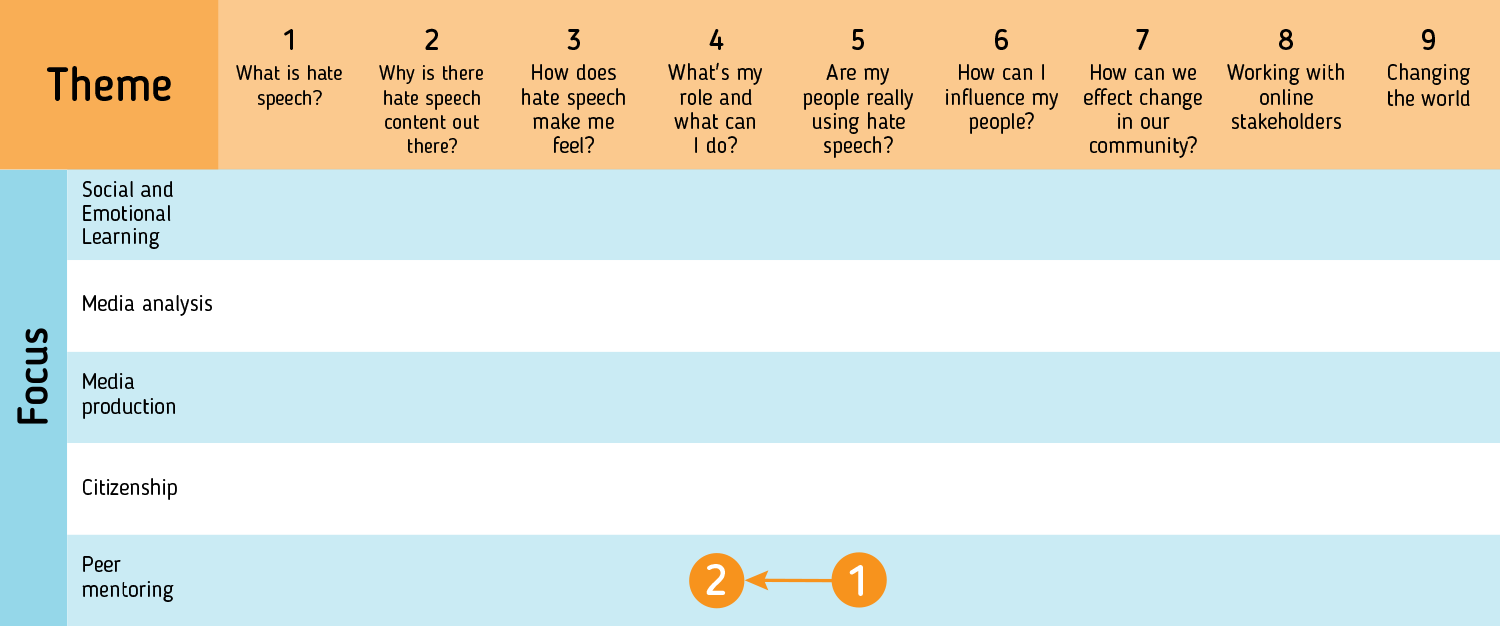Pathway 3: Nest class
This section is a real-life story of a professional experienced working with vulnerable children and youth. She has hacked and found a relevant pathway through the SELMA Toolkit. We hope this story will inspire you to do the same.

“In the Nest-class, approximately 25% of the students have Autism Spectrum Disorders (ASD). The rest fall somewhere within the ‘normal’ spectrum.
Like all other adolescents, the students in our class are online every day. They are 11-12 years old. But still, many of them are already exposed to hate speech. Some see it as a normal part of life online, and do not think much of it. However, due to their disorder, students with ASD have a very concrete way of thinking. When they encounter hateful comments, they find it hard to shut out these kind of comments. They can find it difficult not to take it personally. In this sense, several students have been victims of hate speech.
Therefore, there has been an ongoing request from both teachers and students to work on these kinds of issues, in order to better grasp the concept. To get a better understanding also of how students themselves can help prevent spreading online hate, while helping to create a more positive online culture instead.
We jumped right into ‘Theme 5’ with a ‘Peer Mentoring’ focus. We skipped the warm-up, diving into ‘Activity 2: The battle is on’ instead. ASD-students need very concrete and clear timeframes to be able to cope with this kind of full-on session. Therefore, we set a clearly marked timeframe for every round, making sure no single task or activity would last longer than 15 minutes:
- For Round 1, which explores complex concepts like conformity, norms, social categorisation and polarisation, students had 10 minutes to complete the task. Following this, they got 5 minutes to complete the bonus point question. To keep it light and doable with our specific group, we decided to carry out the task verbally with the whole class instead of in writing. And we didn’t keep scores, so as to avoid making the activity too competitive. At the end of the activity, we took a short break, to make clear a shift would be made.
- In Round 2, pupils have to make a choice – do they cooperate or defect? We asked pupils to write their answer on a piece of paper and then get up and stand in a circle. Everyone had to show their answers at the same time. The activity was carried out this way to create variation and to accommodate restless students. At the end of this round, we took another short break.
- For Round 3, in which the famous Stanley Milgram experiments were discussed, we gave students the choice of solving the task in pairs or by themselves – for us, it is really important we give them these kind of options, as sometimes, they just need some time to work on their own, shielded from the other. We also let them decide if they preferred to express their answers verbally or in writing.
- With the bonus question as a starting point, we had a final discussion about the impact of group dynamics on how individuals behave online.
Once our students had developed a better understanding of the online hate speech group dynamics at play, we continued with the ‘Imagining outcomes - individual responses’ which is part of ‘Theme 4’, ‘Peer Mentoring’. As a warm-up, we asked students to tell us how they would react if they saw a hateful post online. Following this, we presented them with four different courses of action, with the outcomes given in advance. We asked them to assess each of the four scenarios according to risk to self, effectiveness at addressing the issue, and if they would recommend that course of action. If they would not recommend any of the suggested options, we asked them to provide an alternative. The activity was executed in this manner to avoid tiring of the students, and also to create a sense of community within the class and responsiveness to the positions of others.
Overall, the SELMA Toolkit made perfect sense for us, in the Nest context in which we work. We see SELMA as an opportunity to provide all students – including vulnerable groups – with a better understanding of complex issues such as the impact of group dynamics on individuals and communities – especially with regard to the way individuals express their opinions and how these opinions are received by others. This has empowered our students to consider their own opinions and behaviours. Did they previously “follow the group” in order to maintain their sense of belonging? What strategies could they adopt to stand firm and speak up next time around? The activities have made our students reflect on group inclusion and exclusion, which is very relevant for them, and also on how these processes help to explain why hate speech has become so widespread online.”
